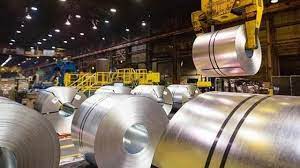New Delhi, Oct 17: The demand for steel in India is expected to register a ‘healthy growth’ of 8.6 per cent against the overall global rise of 1.8 per cent in 2023, worldsteel said on Tuesday.
It forecasts that global steel demand will grow 1.8 per cent in 2023 and reach 1,814.5 MT after having contracted by 3.3 per cent in 2022. In 2024, the demand will see an increase of 1.9 per cent to 1,849.1 MT, the World Steel Association (worldsteel) said.
For India, the global body said, “after a growth of 9.3 per cent in 2022, steel demand is expected to show healthy growth of 8.6 per cent in 2023 and 7.7 per cent in 2024.”
The Indian economy remains stable against the pressure of high interest rate environment, and the steel demand is expected to continue its high growth momentum.
Growth in India’s construction sector is driven by government spending on infrastructure and recovery in private investment. Infrastructure investment will also support the capital goods sector growth, worldsteel said in its Short Range Outlook (SRO).
Healthy growth momentum will continue in automotive. The consumer durables sector is the only sector that is underperforming due to higher inflation/interest rates that constrain discretionary spending. However, it will improve in 2024 with festive season spending and progress in the Production Linked Investment (PLI) schemes, it said.
Máximo Vedoya, Chairman of the worldsteel Economics Committee, said, steel demand has been feeling the impact of high inflation and interest rate environment.
Since the second half of 2022, activities of steel using industries have been cooling sharply for most sectors and regions as both investment and consumption weakened. The situation continued into 2023, particularly affecting the EU and the US.
Considering the delayed effect of the tightening monetary policy, the body expects steel demand recovery in 2024 to be slow in advanced economies. Emerging economies are expected to grow faster than developed ones, he said.
“We expect the situation in China’s property market will stabilise in the latter part of the year and its steel demand will record slight positive growth thanks to government measures. The 2024 outlook for China remains uncertain depending on the policy directions to tackle the current economic difficulties. We note that the Chinese economy is in a structural transition phase that may add volatility and uncertainty.
“Other uncertainty is linked to regional conflicts and unrest such as in Russia and Ukraine, Israel and Palestine, and elsewhere. This could contribute to rising oil prices and further geo-economic fragmentation, both of which are downside risks,” Vedoya said.
It is worth noting that despite the weakening of construction activities due to high-interest rates, infrastructure investment is showing positive momentum in many regions, even in advanced economies, reflecting the effect of decarbonisation efforts, he said. (PTI)
Trending Now
E-Paper


